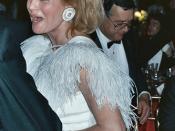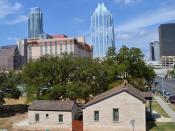Never judge a book by its cover. Appearances can greatly deviate from what is hidden on the inside. "Richard Cory" by Edwin Arlington Robinson, "We wear the mask" by Paul Laurence Dunbar, and "I'm nobody! Who are you?" by Emily Dickinson each give examples of appearances in contrast to reality. Robinson's "Richard Cory" is essentially about a man who is set upon a golden pedestal by others and due to his suppressed sadness, kills himself. "We wear the mask" by Dunbar shows us society's use of a "mask" to hide their sorrow and grief, grinning and smiling when they truly feel overwhelmed with sadness. Dickinson's "I'm nobody!" tells of the role of "somebody" in society as opposed to a "nobody", deeming the truth as the latter of the two. In Robinson's "Richard Cory," Dunbar's "We wear the mask," and Dickinson's "I'm nobody!" appearance versus reality is exhibited through the usage of poetic language evoking various feelings in the reader.
With each authors use of poetic language feelings are stirred and the discrepancies between appearances and reality are clearly expressed.
Robinson's "Richard Cory" lets us closely examine appearances in contrast with reality. All who knew of Richard Cory held him in reverence; they glorified him and were quite jealous of his lifestyle. "And he was always quietly arrayed, and he was always human when he talked; but still he fluttered pulses when he said, 'Good morning,' and he glittered when he walked.... In fine we thought that he was everything to make us wish that we were in his place" gives a perfect example of how highly Richard Cory was thought of by "the people on the pavement" and how they wished to be of his status. Those who watched Richard Cory...


